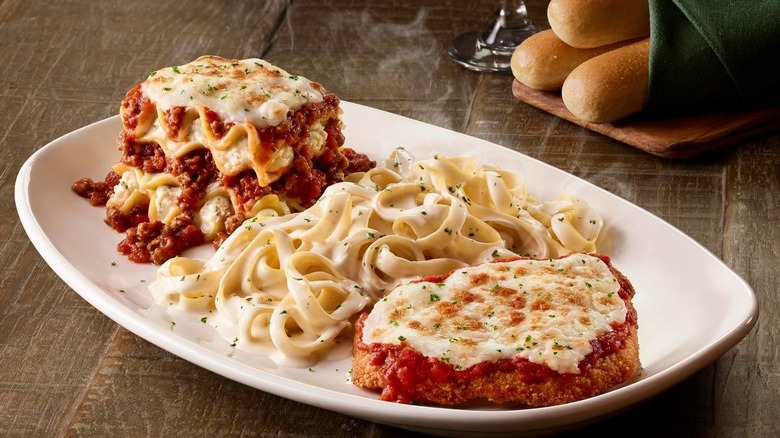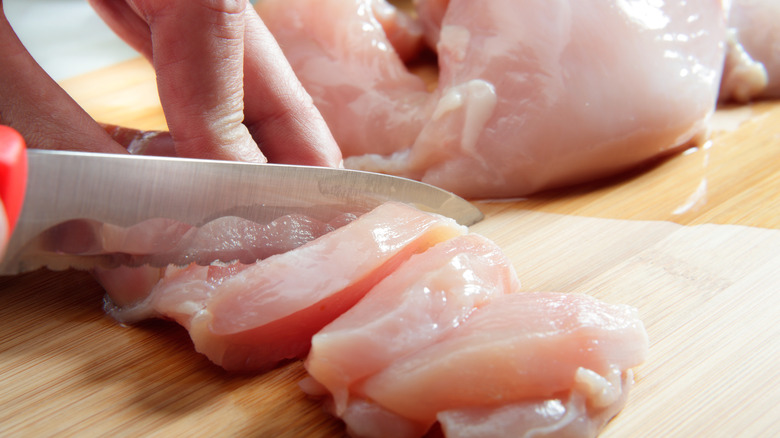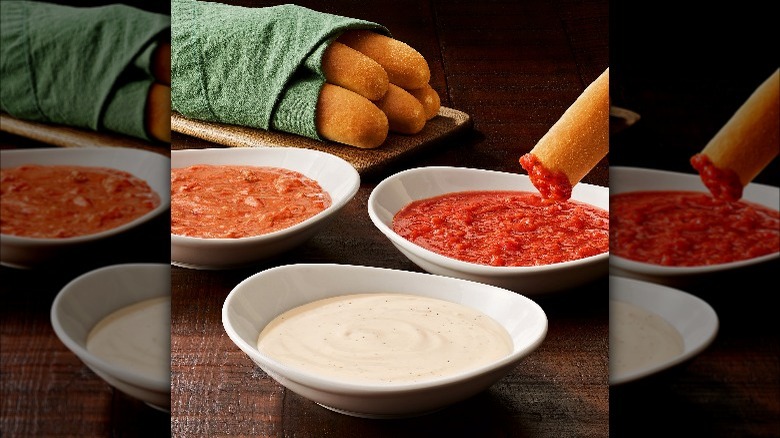Olive Garden Doesn't Mess Around When It Comes To Food Safety
While food quality is a major factor in having an enjoyable dining experience, food safety is even more important. Fortunately for fans of Olive Garden and its version of Italian comfort food, the chain prioritizes safety in the kitchen. During a Reddit AMA, a former staff member disclosed precisely how the restaurant ensures that its menu items remain fresh, flavorful, and safe for consumption.
The former employee claimed that Olive Garden is diligent about monitoring the safety of food. For instance, staff must record the temperatures of different foods to ensure they remain within a safe range to prevent bacterial growth. Staff members also take special care to avoid cross-contamination while sampling items to ensure their flavor quality. In this case, each separate component is sampled using clean spoons, which prevents certain ingredients from contaminating other food stuffs.
Keeping foods at improper temperature and being lax about cross-contamination are two serious lapses within dining establishments. By taking practical steps, Olive Garden is avoiding major contributors to foodborne illness, which can cause serious health issues for customers.
Proper food safety practices to follow
According to the Centers for Disease Control and Prevention, a certain temperature range is considered the "danger zone" when it comes to food safety. In this case, food has the highest risk of bacterial growth when stored at temperatures between 40 and 140 degrees. Accordingly, it's recommended that refrigerator temperatures are set to 40 degrees or lower, while freezer temperatures should be 0 degrees or less to ensure safe storage.
As for cross-contamination, raw ingredients must be kept separate from prepared foods until properly cooked. Additionally, kitchen staff must be cognizant of using different tools and implements when preparing different foods. An example is having separate, designated cutting boards for raw foods, such as chicken, and items like vegetables or bread.
Regarding culinary practices at Olive Garden, the former staff member ended their food safety comment by stating, "If you aren't a great cook, you have no business being at OG." This may lead one to believe that many of the chain's menu items are prepared fresh, which is partially true.
How much of Olive Garden's menu is actually served fresh?
Like all restaurants, Olive Garden aims to make the food prep process as efficient as possible without directly impacting the quality of menu items. In this case, some of the chain's offerings are frozen, such as the desserts. These frozen desserts are heated up in the microwave when a customer orders them, as are the dipping sauces that accompany the establishment's appetizers and breadsticks.
However, most other Olive Garden fare is prepared fresh. The chain's famous soups and pasta sauces are all prepared "by hand and from scratch" on a daily basis, per the restaurant's website. And while Olive Garden pasta is not exactly made to order, it's not frozen either. According to a former staff member quoted by Redbook, pasta is cooked in the morning and cooled via an ice bath. When a customer orders a pasta dish, a chef places it into boiling water to heat it, then adds sauce before serving.
Dining establishments like Olive Garden must maintain a delicate balance between efficiency, safety, and quality. These cooking processes ensure that diners at the restaurant are privy to a pleasing experience every time.


